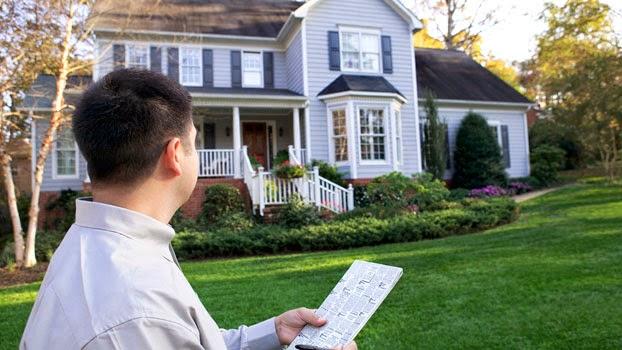Nothing attracts a shopper’s attention like a good price and a pretty picture, and the same is true when it comes to home sales.
Online services are a great way for a seller to reach thousands of prospective buyers — but if your listing ad is poorly written, has blurry photos and an inflated asking price, no one will bother calling for a showing.

Creating a listing that stands out from the rest falls under “marketing,” squarely in the middle of ForSaleByOwner.com’s seven-step process for selling a home.
“These steps are exactly the same regardless of whether you use an agent or sell a home yourself,” says Eddie Tyner, general manager of ForSaleByOwner.com. “The key to success is to think like a professional and create a professional-looking listing.”
The importance of a good-looking online listing can’t be overemphasized, Tyner says, since nine in 10 buyers used the Internet at some point while looking for a home, and more than half started their search online, according to the National Association of Realtors.
3 Key Elements of a Good Property Listing:
Why Listing Ads Keep It Short and Sweet
While online listings typically offer up to 2,500 characters for a description, some outlets offer far less. “Real estate ads in newspapers often have a 50-character limit, and the MLS usually has up to a 500-character limit,” says Derek Morgan, manager of broker services at ForSaleByOwner.com.
Keep this in mind as you’re writing, and break your description into two paragraphs: The first paragraph should contain a complete walking tour of your home in less than 500 characters so you’re sure your home’s key features will be highlighted everywhere your listing appears. The second paragraph of your description tells the story of your house. Here is where you can further accentuate the unique benefits and emotional appeal of your property.
How to Write a Property Description
Morgan advises FSBO sellers not to reveal too much in their property description. He describes the problem as “push vs. pull” and warns that an overabundance of push turns off prospective buyers.
As an example, while it might be tempting to write something like: “Let the good times roll! Wonderful wood-paneled, fully finished basement with wet bar, recessed appliances, carpeting and built-in THX sound system …”
More prospective buyers would actually be pulled in by: “Finished basement with amenities; great for entertaining.”
Morgan emphasizes that the first 500 words of a property description ought to be “well rounded” and “complement” and expand on the initial blurb.
“I’d say the initial, short description is the sign in the yard, and the expanded description is the virtual walk-through,” he says.
The vital part of that walk-through is the photo gallery.
The Best Photos for a Listing
The easiest way to get high-quality photos for your listing is to hire a professional photographer. Many professionals, such as Al Larson Photographic & Publishing of Cape Coral, Florida, offer affordable home listing packages.
Larson, a longtime professional, notes that experience and equipment can be the difference in making a home really shine photographically. Lighting, choice of camera and lens, and enhancements during editing are important skills that the average FSBO seller might not possess.
Larson notes that many FSBO sellers shoot their own photos using cameras on smartphones and tablets. The results can be disastrous: blurry images, crooked rooflines, poorly staged rooms and photographer reflections.
Photo Pointers for FSBO Sellers
Because so many sellers take a DIY approach to photography, ForSaleByOwner.com’s Morgan has a strategy for helping them create photos that are as good as possible. “The first step is to understand that a photo gallery is essentially a virtual walk-through of your home,” he says.
He suggests that the gallery start with an external front view of the home, then feature interior photos that progress logically through the property. “You don’t want prospective buyers to be looking at the 10th photo and be unsure whether they’re upstairs on downstairs,” he says.
Like Larson, Morgan warns sellers to make sure their home is ready before shooting the photos. In most cases, this will mean doing some serious decluttering and “depersonalization,” which will help prospective buyers project themselves into the space and feel a greater affinity for your home. If necessary, declutter rooms in sequence, moving and replacing contents as you shoot your way through the home, Morgan says.
Morgan also recommends using a high-end digital camera, if possible, and a wide angle lens. If you’re using a smartphone or tablet, use a wide-angle attachment or take photos using the device’s panoramic mode. “To prevent distortion, don’t sweep the camera through its full panoramic range,” Morgan says. “Only sweep wall to wall.”
He also suggests turning on all lights, opening blinds halfway and taking photos an hour or two after sunrise or before sunset so that soft light streams into rooms.
How to Photograph Your Home in 4 Steps
What About Video?
Video does have a place in an online listing, but moving images are more effective toward the end than at the beginning.
“The industry consensus on videos is that although sellers want them, buyers initially want photos, not videos,” Morgan says. “Photos are easier to navigate, easier to pick and choose.”
It’s still a good idea to include a simple 90-second walk-through video, though, he says. When prospective buyers are narrowing the selections of homes they would actually like to tour, a video often will help a property stand out and make the final cut.
Take a look: How to stage and shoot your home for your online listing